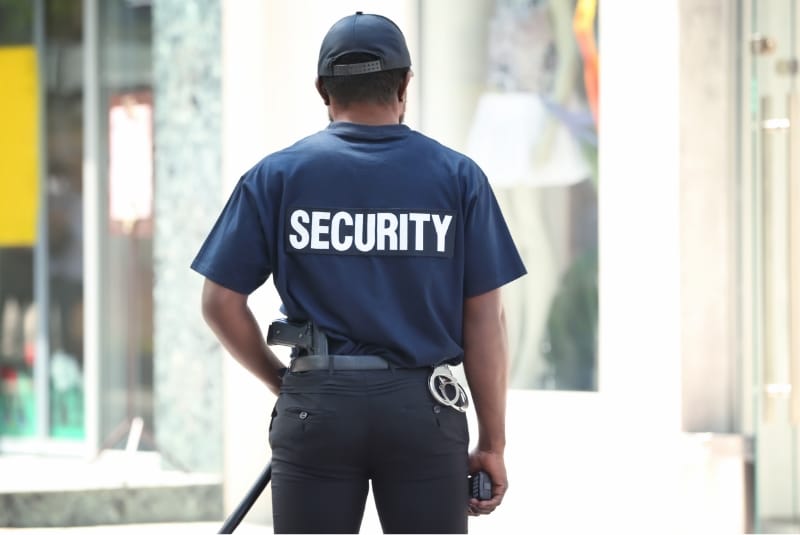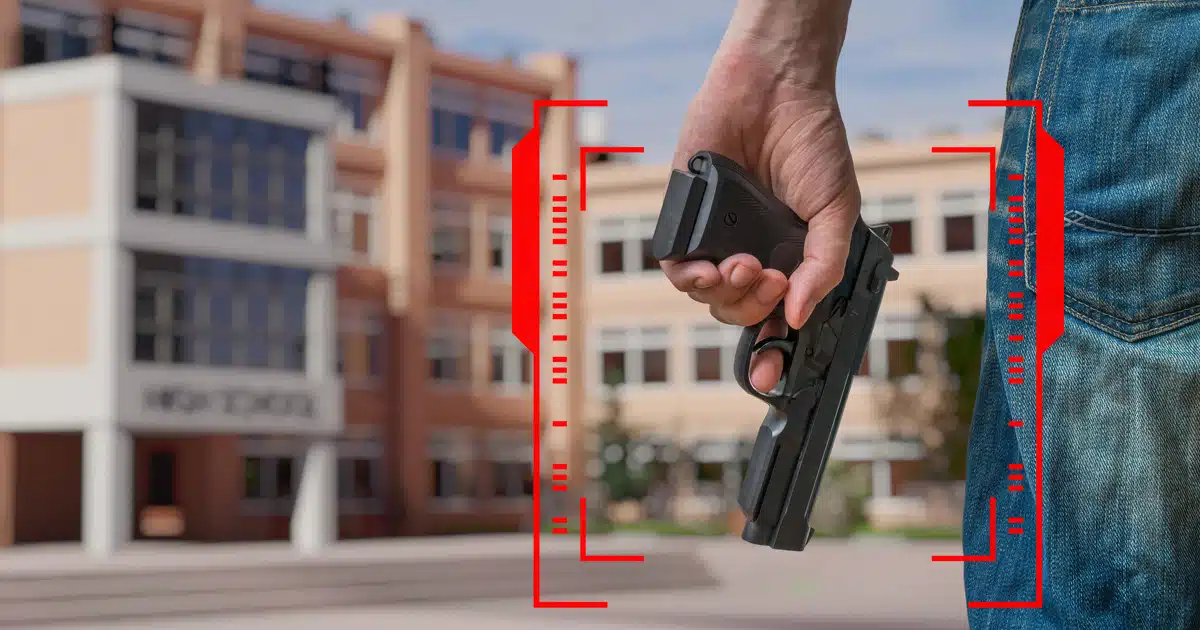Dallas Gun Violence Statistics and Security Insights
The numbers tell a story that’s both encouraging and sobering. Here’s what the data means for your security planning.
Key Takeaways: What Does the Data Tell Us?
Dallas gun violence statistics paint a picture that’s more complex than most headlines suggest. Yes, we’re seeing real progress. Dallas police reported 183 murders in 2024, a 26.2% drop compared with the year before¹. That’s the fourth straight year of decline, which is genuinely good news.
But here’s what the statistics don’t tell you: when something does happen, you’re often on your own for those critical first minutes.
Police response times? They’re struggling. Priority 1 calls, a category that includes shootings, stabbings and assaults, took a Dallas officer 11.4 minutes on average to respond to, which is roughly three minutes longer than the department’s eight-minute response goal². For less urgent but still serious calls, you might wait over an hour. Sometimes much longer.
The Bottom Line Is Dallas Safe?
- Violent crime is lower. Dallas reported 183 murders in 2024, a 26.2% drop compared with the year before, and the city’s lowest victim count since 2018, when 159 murders were reported¹
- Police response times are high. Response times consistently exceed department targets across all emergency levels³
- Schools are still at risk. School incidents continue despite security measures (we’ll get into specifics)
Security technology makes a difference. Your own security systems are the most crucial in the first few minutes of a security threat.
How We Got Here
Dallas’s gun violence story mirrors what happened across the country, with some local twists. The city hit rock bottom during the pandemic surge. In 2020, we saw 254 murders¹. That was brutal.
Since then, it’s been four years of steady improvement. Police credit data-driven strategies and what they call “hot spot policing.” Basically, they’re being smarter about where they focus resources.
The bigger picture for Texas gun violence is mixed. Statewide, firearm deaths have climbed to levels not seen since the 1990s. Lawmakers have approved more than 100 bills that loosened gun restrictions since 2000⁴. Whether there’s a connection is debated, but the numbers are what they are.
What’s not debated: young people are still getting caught in the crossfire. As of Sept. 30, 26 teen homicides had occurred in 2024, compared to 23 at the same time last year⁵.
Contact Us
With a rich history of innovation, Omnilert is the leading provider of AI Gun Detection.
2024-2025 Gun Violence Data Dallas Crime Rate Statistics
Workplace Incidents
National data shows us that when workplace violence turns deadly, it’s usually a shooting. From 2003-2013, 8,987 violent acts resulting in death at work places were attributed to the following: Shooting (51%), Suicides (28.3%), Stabbing (5.6%), Animal Attacks (4.5%), and Beating (4%)⁶. For women especially, homicide is the second-leading cause of death for women in the workplace⁶.
In Dallas, the challenge isn’t just the incidents themselves. It’s the response capacity. The shortage has led the Central Business District in Downtown Dallas to log a much higher crime rate than Fort Worth’s downtown area, which has a dedicated neighborhood police unit that works alongside private security guards⁷.
What’s Happening in Schools
April 2025 brought another wake-up call. A 17-year-old opened fire at Wilmer-Hutchins High School, hitting five students. Surveillance footage reviewed by police showed another student letting the suspect into the school through an unsecured door at approximately 1:03 p.m. By entering through that door, the suspect bypassed the school’s metal detectors⁸.
This wasn’t the school’s first incident. In April 2024, a student brought a handgun into the school, bypassing metal detectors and a clear-bag policy⁸. Different shooter, same school, similar security gaps.
Here’s what bothers us about these incidents: the security measures that failed weren’t necessarily bad ideas. Metal detectors, clear backpacks, controlled access—these can work. But they’re not foolproof, and when they fail, you need backup systems that kick in immediately.
Response Time Reality Check
Current Dallas Police Department numbers aren’t encouraging if you’re counting on quick help:
- Priority 1 calls: 10.8 minutes average (goal: 8 minutes)³
- Priority 2 calls: 88.9 minutes average (goal: 12 minutes)³
- Priority 3 calls: 253.9 minutes average (goal: 30 minutes)³
- Priority 4 calls: 282.8 minutes average (goal: 60 minutes)³
That’s not a criticism of the officers. They’re understaffed. The department only fields around 3,000 officers, despite a prior City analysis that asserts roughly 4,000 are needed based on Dallas’ population³.
Healthcare and Government Facilities
Healthcare facilities face unique challenges. They can’t lock down like schools can. They need to stay accessible while remaining secure. Government buildings have stepped up security measures, but they’re learning the same lesson everyone else is: reactive security isn’t enough anymore.
- 1 Min
-
2 Min
WEAPON VISIBLE BY CAMERA
Omnilert’s Gun Detection can detect guns and trigger a full-scale response within seconds, before shots are fired.
- 3 Min
AI Gun Detection How Gun Detection Can Save You Critical Time to Protect Lives
After tragedies like the Parkland shooting, the need for rapid threat detection in schools has grown urgent. Omnilert’s AI gun detection delivers critical early warnings and triggers an automated response, helping schools act quickly to protect lives when every second matters.
Five Years of Change in Dallas (2020-2024)
Looking back over five years, the story has three chapters:
The Crisis (2020-2021): Everything got worse during the pandemic. Murders spiked to 254 in 2020. Social upheaval, economic stress, more guns on the street—it all contributed.
The Turnaround (2021-2023): Strategic policing started working. Hot spot focus, place-network investigations, community partnerships. The numbers began dropping.
The New Normal (2024): We’re now at 183 murders, back to pre-pandemic levels. But that’s still higher than Dallas’ 159 murders in 2018¹.
Technology adoption has accelerated during this period. More organizations are investing in AI-powered detection systems and automated emergency response platforms. The old approach of “call 911 and wait” doesn’t feel adequate anymore.

The Longer View (Ten Years Out)
Over the past decade, we’ve seen fundamental shifts in how organizations think about security. Ten years ago, most facilities relied on traditional approaches: cameras for investigation after incidents, alarm systems that notified security companies, maybe a guard at the front desk.
Today’s approach is different. It’s about prevention and early intervention. Texas has loosened gun restrictions considerably (those 100+ bills since 2000), which means more firearms in circulation. At the same time, detection technology has gotten smarter and response systems more automated.
The result? Organizations that stay ahead of threats do better than those that don’t. It’s not just about having security—it’s about having the right kind of security for today’s reality.

Where Traditional Security Falls Short
We see the same vulnerabilities repeatedly:
Physical barriers can be bypassed. The Wilmer-Hutchins incident proves this. Metal detectors work until someone finds another way in.
Response delays leave critical gaps. When police average over 10 minutes for priority calls, those first minutes matter enormously.
Outdoor areas often go unmonitored. Security cameras are uniquely capable of monitoring large areas, including the outdoors where over 50% of gun violence begins⁹, but many security systems focus primarily indoors.
Communication breakdowns slow everything down. Getting the right information to the right people quickly isn’t as easy as it sounds. Budget constraints matter too. Comprehensive security costs money, and not every organization can invest in everything they’d like to have.

How Omnilert Can Help Improving Security Systems with New Technologies
Building Better Protection Against Gun Violence
Effective gun violence prevention requires layered approaches that address threats at different stages:
Early detection matters most. Systems that identify weapons before shots are fired provide advance warning that traditional approaches can’t match.
Speed beats perfection. Automated systems that respond instantly often perform better than perfect procedures that take time to implement.
Coverage needs to be comprehensive. Both indoor and outdoor monitoring are essential, since threats can start anywhere.Integration amplifies everything. Connected systems that share information and coordinate responses work better than isolated security measures.
Sources
- Dallas Observer. “Dallas’ violent crime fell for a 4th year in 2024, with murders at lowest level since 2018.” Dallas Morning News, January 19, 2025. https://www.dallasnews.com/news/crime/2025/01/18/dallas-violent-crime-fell-for-a-4th-year-in-2024-with-murders-at-lowest-level-since-2018/
- Dallas Morning News. “Dallas police are taking longer to respond to the most serious crimes.” January 21, 2024. https://www.dallasnews.com/opinion/editorials/2024/01/19/dallas-police-are-taking-longer-to-respond-to-the-most-serious-crimes/
- Dallas Express. “Police Response Times Still High More Than Halfway Through 2024.” July 28, 2024. https://dallasexpress.com/crime/police-response-times-still-high-more-than-halfway-through-2024/
- Texas Tribune. “Deaths from firearms keep climbing in Texas, decades after lawmakers began weakening gun regulations.” May 10, 2023. https://www.texastribune.org/2023/05/10/texas-gun-fatalities-laws/
- Dallas Morning News. “More teens are dying of gun violence in Dallas. Here’s how we stop the killing, trauma.” November 2, 2024. https://www.dallasnews.com/news/commentary/2024/10/31/more-teens-are-dying-of-gun-violence-in-dallas-heres-how-we-stop-the-violence/
- ALICE Training. “Workplace Violence Statistics | Learn About Workplace Violence Facts & Response.” April 21, 2020. https://www.alicetraining.com/our-program/alice-training/workplace/workplace-violence/
- Texas Scorecard. “Dallas Police Continue to Struggle with Response Times.” May 14, 2024. https://texasscorecard.com/local/dallas-police-continue-to-struggle-with-response-times/
- CNN. “Suspect in Dallas high school shooting fired ‘indiscriminately,’ injuring 5 students, documents say.” April 17, 2025. https://www.cnn.com/2025/04/16/us/dallas-high-school-shooting-suspect-in-custody/index.html





